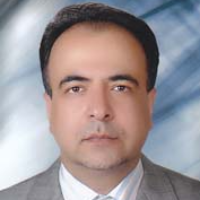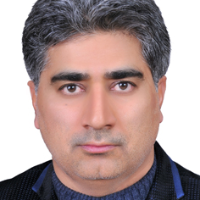A Study of Baloch Women's Political Participation According to the Social Stratification of Baluchistan
In any society the political participation of social groups is formed based on the social and cultural structures of that society, which makes participation reasonable or traditional. The political participation of Baluch women has also been formed on the same basis. In this regard, according to the present question, how has the Baluchistan stratification system brought the political participation of Baluch women under its radius? It was tried to study the political participation of Baluch women according to social stratification. The current research was conducted with a contextual method, as well as with a semi-structured interview technique and targeted sampling of eleven Baluch men and women. The main goals of the research are to untangle the issues and problems of political participation in Baluchistan region. Identifying the effect of political participation on the social stratification process of Sistan and Baluchistan and finding practical and precise solutions for the political participation of women in the province to be used in the development strategies and prospects of the country. The findings of the research show that the political participation of Baluch women has been under the influence of social stratification in Baluchistan. Despite the fact that the background factors such as: patriarchy, gender socialization, religious concepts and historical and mental backgrounds are similar, but women's participation has been formed according to the social stratifications of each part of Baluchistan region. According to social stratifications, including: tribal stratification in northern Baluchistan, caste stratification in central and southern Baluchistan, and economic and tribal stratification in coastal Baluchistan, which affects the political participation of not only women but all the people of the region. This means that the political participation of women in the Baluchistan region in terms of qualitative understanding of this participation, has become a collective action by the influential and superior classes in this region. Based on the contextual method and the central phenomenon obtained, i.e. "retrospection", the social stratification of the Baluchistan region, despite technological, educational developments, etc., is still based on its previous social stratifications, and there has been little change in the social stratifications of Baluchistan region. On the other hand, such a tendency towards the past in the cultural structure of Baluchistan has caused the lack of meritocracy in political and social competitions; For example, the education and expertise of the candidates and participants does not play a significant role in the political equations of Baluchistan. Based on this,. In fact, we see a back-and-forth relationship between these two concepts, which fulfill each other in a vicious circle. Although this research was conducted to investigate the political participation of Baluch women, the results of the qualitative research that focused on the hidden and more complex aspects of this participation described a model of participation that gives meaning not only to women, but also to the whole of political participation in Baluchistan society. In this context, women's participation is not based on their gender, but on the basis of belonging to certain classes and in some cases even as a tool at the disposal of that class. According to the categories of the research, which have progressed towards becoming richer and broader explanations during the analysis of qualitative data, it seems that the social stratification of Baluchistan is based on "tribe" and "caste" in the form of retrospection, and the equations Power and political participation in the Baluchistan region are organized within its framework; As according to the originality of collectivism and the negation of individualism, patriarchy, inner self, etc., women and men of caste and class participate in maintaining the unity of the caste and class and its domination over other castes and classes, and for this purpose, They use their own special tools. Despite the fact that democratic tools such as: elections have existed in this region since the Pahlavi period, but sects and classes used it for sect and class interests, which during the periods of holding elections for the Islamic Council and the City and Village Councils.
-
Analysis of discursive mechanisms to solve the drought problem in Sistan
Mahmoud Sheikh Oveisi, Ahmadreza Taheri *, Parviz Reza Mirlotfi
Quarterly of Geography (Regional Planing), -
Study of Human Development Indicators in Iran with Emphasis on Transparency (2013-2021)
Hossein Akbari, *, Arsalan Ghorbani Sheikhneshin
The Islamic Revolution Approach, -
Obstacles and challenges to the development of economic diplomacy in Iran (in the Pahlavi period and the Islamic Republic) and Afghanistan and solutions to overcome them
Morteza Shibany Asl, Abdolrasoul Hasanifar *, Ahmadreza Taheri
Quarterly of Geography (Regional Planing), -
Investigating the Functioing of the Islamic Council in Iran,s Political System( with Emphasis on the Sixth and Seventh Periods)
Ali Mohammad Sharifi *, Masoumeh Reshad,
Jostarha - ye Siyasi - ye Mo'aser,




